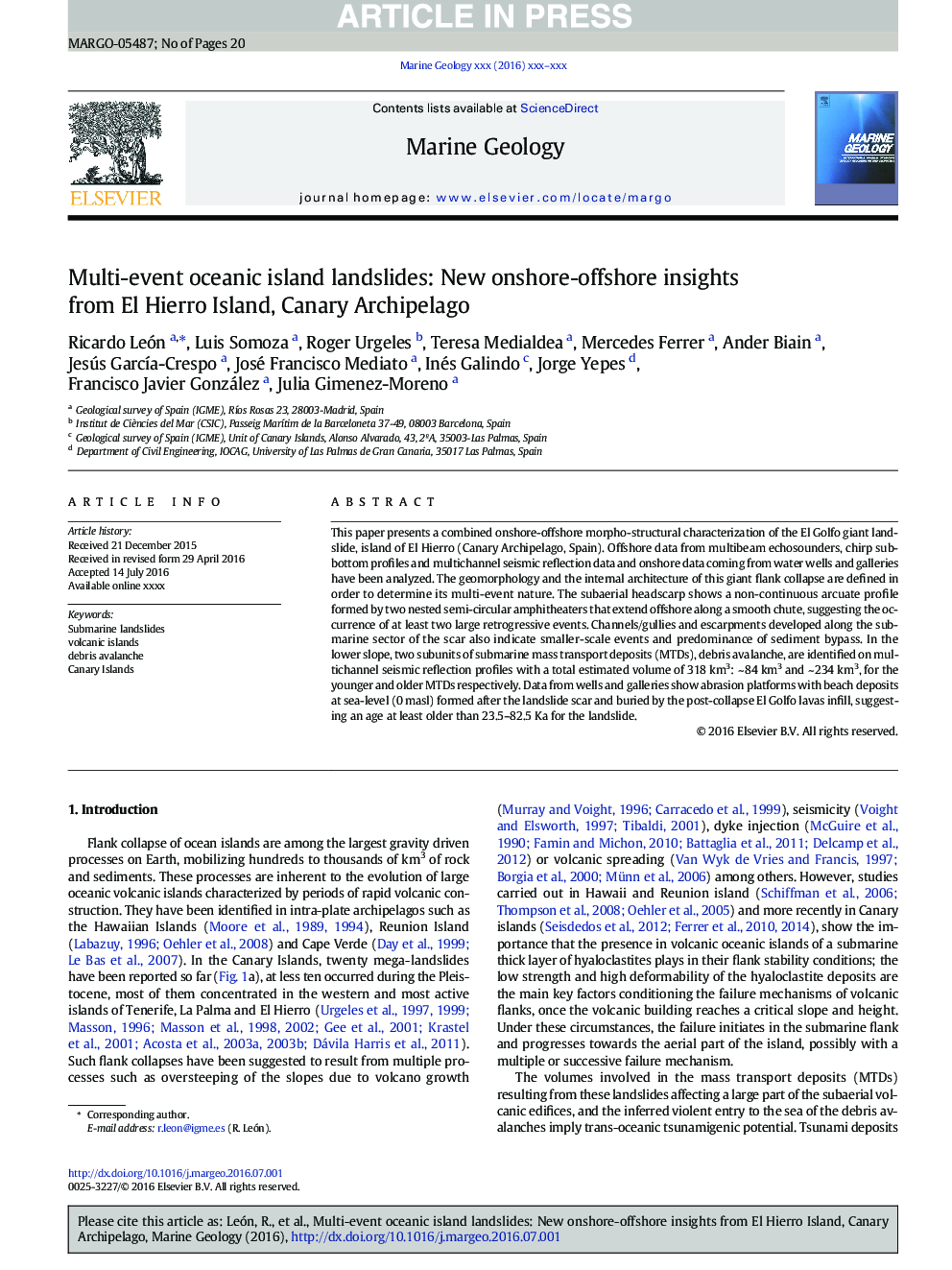| Article ID | Journal | Published Year | Pages | File Type |
|---|---|---|---|---|
| 8912095 | Marine Geology | 2017 | 20 Pages |
Abstract
This paper presents a combined onshore-offshore morpho-structural characterization of the El Golfo giant landslide, island of El Hierro (Canary Archipelago, Spain). Offshore data from multibeam echosounders, chirp sub-bottom profiles and multichannel seismic reflection data and onshore data coming from water wells and galleries have been analyzed. The geomorphology and the internal architecture of this giant flank collapse are defined in order to determine its multi-event nature. The subaerial headscarp shows a non-continuous arcuate profile formed by two nested semi-circular amphitheaters that extend offshore along a smooth chute, suggesting the occurrence of at least two large retrogressive events. Channels/gullies and escarpments developed along the submarine sector of the scar also indicate smaller-scale events and predominance of sediment bypass. In the lower slope, two subunits of submarine mass transport deposits (MTDs), debris avalanche, are identified on multichannel seismic reflection profiles with a total estimated volume of 318Â km3: ~Â 84Â km3 and ~Â 234Â km3, for the younger and older MTDs respectively. Data from wells and galleries show abrasion platforms with beach deposits at sea-level (0Â masl) formed after the landslide scar and buried by the post-collapse El Golfo lavas infill, suggesting an age at least older than 23.5-82.5Â Ka for the landslide.
Related Topics
Physical Sciences and Engineering
Earth and Planetary Sciences
Geochemistry and Petrology
Authors
Ricardo León, Luis Somoza, Roger Urgeles, Teresa Medialdea, Mercedes Ferrer, Ander Biain, Jesús GarcÃa-Crespo, José Francisco Mediato, Inés Galindo, Jorge Yepes, Francisco Javier González, Julia Gimenez-Moreno,
